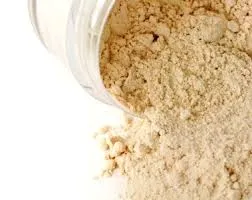Common Water Treatment Chemicals An Overview
Water treatment is a critical process that ensures that water is safe for human consumption, agricultural use, and industrial applications. The use of chemicals in this process plays a pivotal role in removing impurities, controlling microbial growth, and enhancing the overall quality of water. In this article, we will explore some of the common water treatment chemicals, their functions, and their importance in maintaining clean and safe water resources.
1. Coagulants
Coagulation is one of the first steps in water treatment, where chemical coagulants are used to remove suspended particles and colloids from water. Common coagulants include aluminum sulfate (alum), ferric sulfate, and poly aluminum chloride. These chemicals work by destabilizing the negatively charged particles in water, allowing them to clump together and form larger aggregates known as flocs. These flocs can be easily removed through sedimentation and filtration, significantly improving the clarity of water.
2. Flocculants
After coagulation, the flocculation process enhances the removal of suspended solids. Flocculants, such as polyacrylamide, are added to promote the agglomeration of smaller flocs into larger aggregates. This process increases the efficiency of the sedimentation step, resulting in cleaner water. Flocculants are particularly beneficial in treating water with low turbidity levels, ensuring that even the smallest particles are effectively removed.
Disinfection is crucial in ensuring the microbiological safety of drinking water. Common disinfectants include chlorine, chloramines, ozone, and ultraviolet (UV) light. Chlorine is widely used due to its effectiveness in killing bacteria and viruses; however, it can react with organic matter in water to form potentially harmful byproducts, such as trihalomethanes (THMs). Chloramines, which are formed by combining chlorine with ammonia, produce fewer byproducts and provide a longer-lasting disinfection effect. Ozone is a powerful oxidant that effectively disinfects water without leaving harmful residues, while UV light effectively inactivates microorganisms by damaging their DNA.
4. pH Adjusters
common water treatment chemicals

Maintaining the proper pH level in water is essential for optimal disinfection and overall water quality. pH adjusters, such as sulfuric acid, sodium hydroxide, and calcium carbonate, are used to raise or lower the pH of water. A neutral pH (around 7) is ideal for disinfection processes, as extreme pH levels can reduce the effectiveness of disinfectants and corrode pipes.
5. Corrosion Inhibitors
Corrosion in water distribution systems can lead to water quality issues and infrastructure damage. Corrosion inhibitors, such as orthophosphate and silicates, are added to water to form protective films on the surfaces of pipes and fixtures. By minimizing corrosion, these inhibitors help maintain water quality and prolong the lifespan of plumbing infrastructure.
6. Algaecides
In water bodies like reservoirs and treatment plants, algal blooms can disrupt water quality and aesthetics. Algaecides, such as copper sulfate and hydrogen peroxide, are employed to control unwanted algal growth. These chemicals work by either killing algae or inhibiting their growth, thereby preventing taste and odor issues and improving water clarity.
7. Dechlorination Agents
After water has been disinfected with chlorine, dechlorination may be necessary before the water is released into the environment or used for irrigation. Dechlorination agents, such as sodium bisulfite and activated carbon, are used to neutralize residual chlorine, ensuring that it does not harm aquatic ecosystems.
Conclusion
The use of chemicals in water treatment is fundamental to producing safe and high-quality water for various uses. From coagulation and disinfection to pH adjustment and corrosion prevention, each chemical plays a specific role in the overall process. As municipalities and industries continue to seek efficient and sustainable water treatment solutions, advancements in chemical formulations and treatment technologies will further enhance the safety and quality of our water resources. Understanding the common water treatment chemicals and their functions is essential for anyone involved in water management and environmental conservation. Ultimately, the goal is to provide access to clean and safe water for all, safeguarding public health and the environment.

